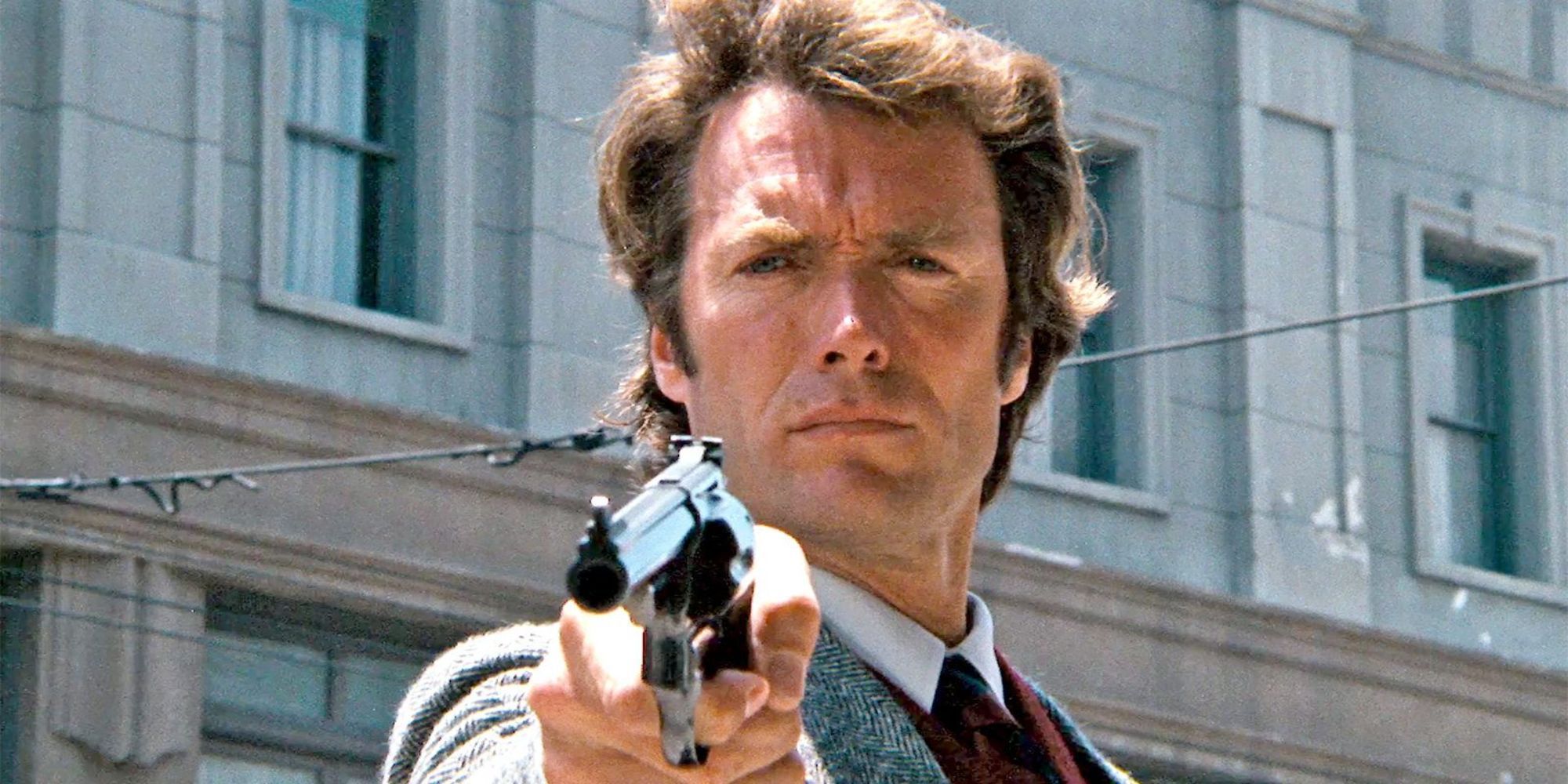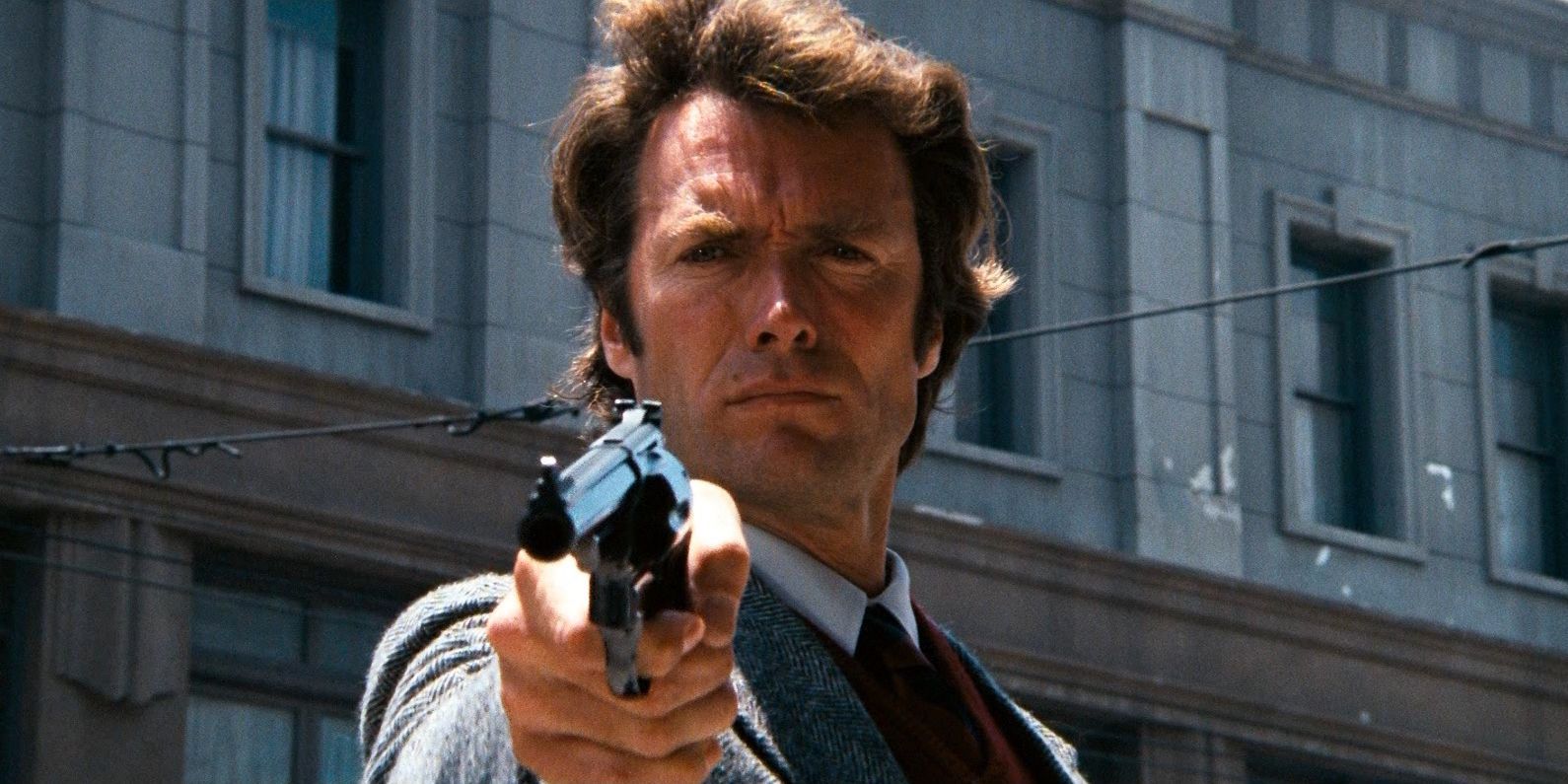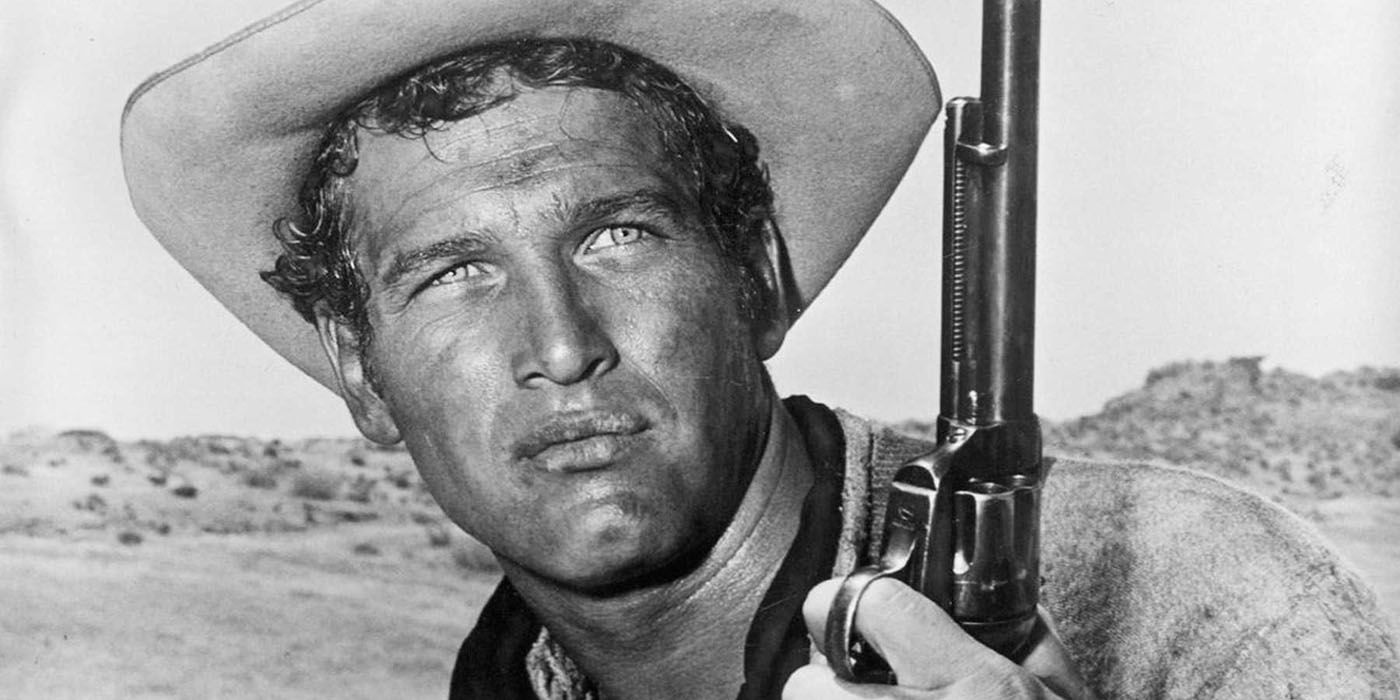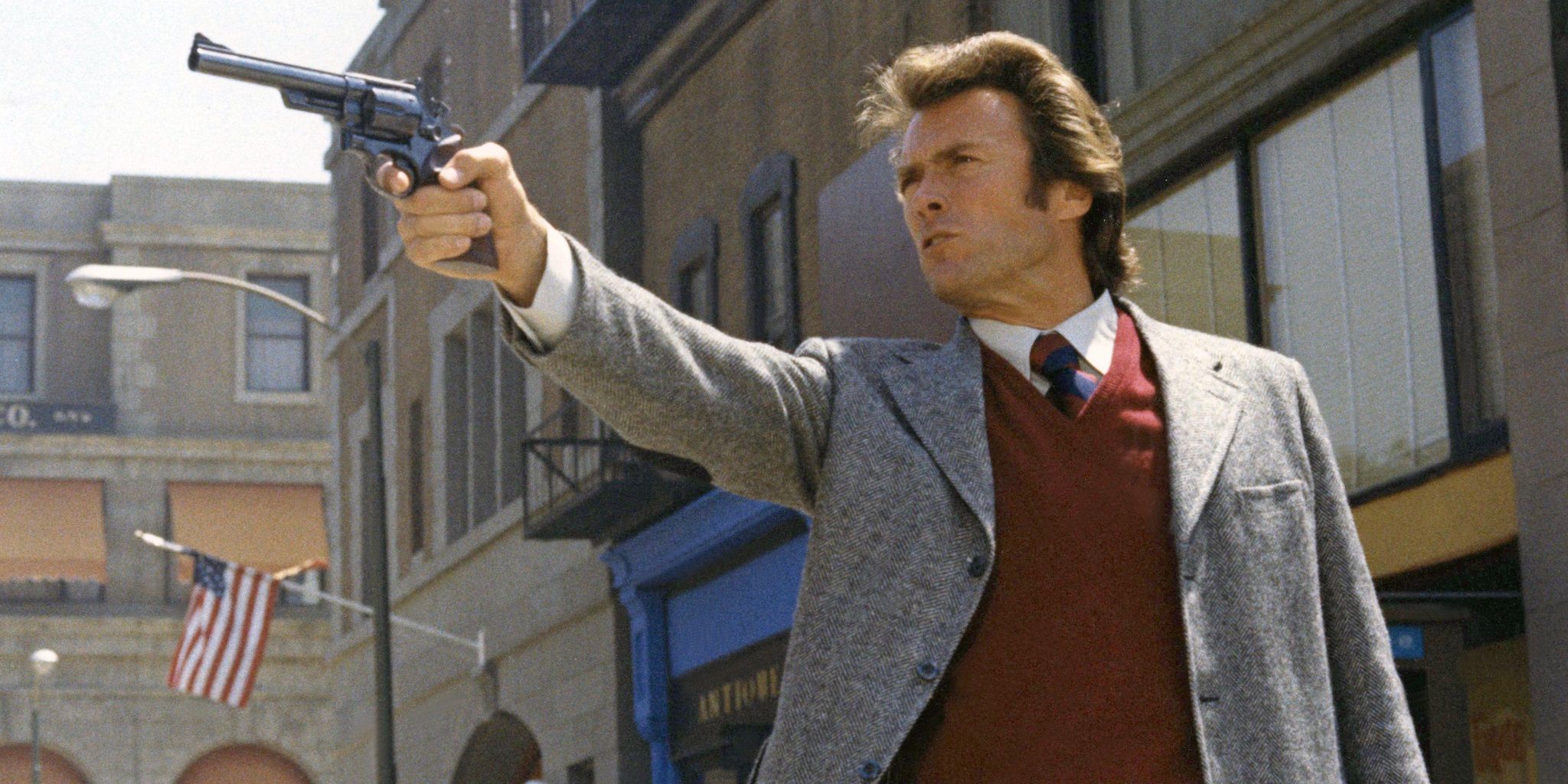Clint Eastwood
A Look at the 4 Distinctive Eras in Clint Eastwood’s Acting Career
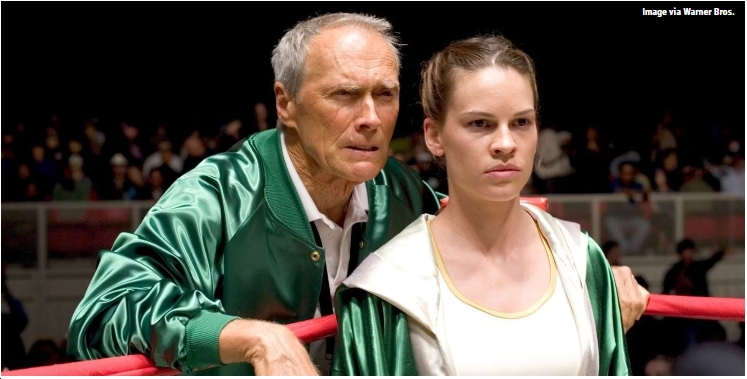
If it seems like Clint Eastwood has graced Hollywood screens for an eternity, that’s not all that far off. Eastwood has been in films since his uncredited role in 1955’s Revenge of the Creature at the tender age of twenty-five. Often cast in the role of the outsider, he embodies a certain coolness that comes across effortlessly. From well-known films like Dirty Harry to underrated films like A Perfect World, Eastwood’s done them all. What is particularly interesting about his filmography is how, for the most part, his roles can be grouped into four distinctive periods: The Cowboy Era, The Rebel Era, The Haunted Era, and The Curmudgeon Era. There are exceptions, of course, like 1971’s thriller and Eastwood directorial debut Play Misty For Me, a film that falls right in between the Cowboy and Rebel eras without being a fit in either. Overall, though, the observation is true, four stages of a career, which has not only outlasted many of his peers but continues to enchant audiences world-wide.RELATED:Every ‘Dirty Harry’ Movie Ranked Worst To Best
The Cowboy Era
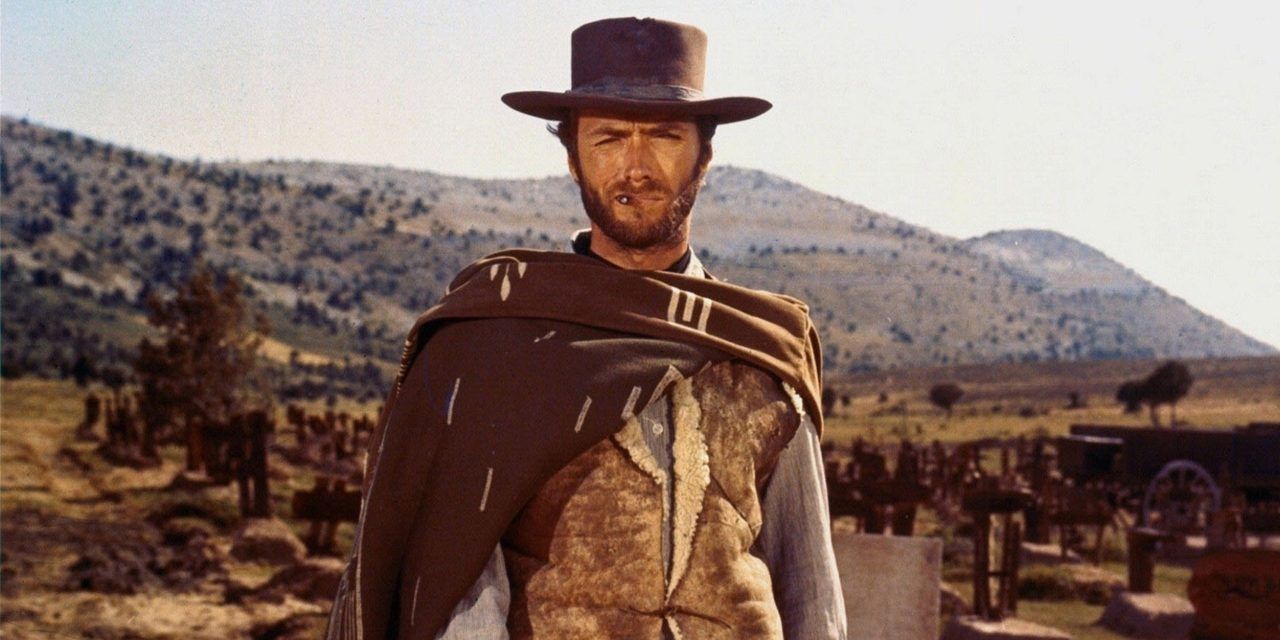
Prior to 1959, Eastwood’s film career was filled with a number of uncredited or minor roles, like ‘Jet Squadron Leader’ in the movie Tarantula. That all changed with the TV series Rawhide, where he had a lead role as Rowdy Yates, cowhand and right-hand man to Gil Favor (Eric Fleming). Rawhide told the story of a cattle drive from San Antonio, Texas, to Sedalia, Missouri, and all the adventures of the crew in between. Eastwood would be the only cast member to appear in all 217 episodes of the successful show, which ended in 1965. From there to 1970, the bulk of Eastwood’s work was in westerns, none bigger and more iconic than his role as ‘The Man With No Name’ in Sergio Leone‘s spaghetti western Dollars Trilogy, consisting of A Fistful of Dollars, For a Few Dollars More and The Good, The Bad and The Ugly. Mysterious, unflappable, sly, and instantly memorable, it’s the role that propelled Eastwood into movie stardom: the perfect storm of story, director and actor clicking as one.
1968’s Hang ‘Em High saw Eastwood portray Jed Cooper, an innocent man accused of cattle rustling and murder by a lynch mob, who hang Cooper and leave him to die. Cooper survives the encounter, though, and returns to his former profession as a lawman. His first mission – hunt down the vigilantes that lynched him and bring them to justice (making the movie somewhat atypical, a quest for revenge that involves bringing the wrongdoers in to face justice, as opposed to simply gunning them down). The era also included Eastwood’s first, and only, acting role in a Hollywood musical, 1969’s Paint Your Wagon, as Sylvester ‘Pardner’ Newel, who teams up with farmer Ben Rumson (Lee Marvin). They stake a claim and build a mining camp in the wilds of California during the Gold Rush after finding gold dust whilst burying Padner’s dead brother. The movie is far more memorable for its pairing of Eastwood and Marvin, two western legends, than it is for the singing abilities of the leads. Eastwood wouldn’t totally abandon the musical genre, however: he directed Jersey Boys, the 2014 musical drama based on the Tony-winning stage musical about Frankie Valli & The Four Seasons.
The clear end of the era is 1970’s Two Mules for Sister Sara, where Eastwood plays Hogan, a man on reconnaissance for a mission to capture a French fort. On the way, he comes to the aid of nun Sister Sara (Shirley MacLaine), who is on the run from the French (and not forthcoming on why she is being pursued). She needs his help, and he needs her information on the fort, so they help one another and become good friends in the process. It wasn’t Eastwood’s final western – Sara was followed a few years later by High Plains Drifter and The Outlaw Josey Wales, the only two westerns of note until he revisited the west with 1992s Unforgiven – but it was the point where his roles became more contemporary.
The Rebel Era
Clint Eastwood’s Rebel Era isn’t all that different from the Cowboy Era, truth be told. Swap out the cowboy hat and western gear for modern clothing, and the horse for a Ford Galaxie 500. But if we define rebel as one who opposes authority, then the era becomes that much more distinctive: the age of the western loner, meting out justice versus the modern, urban anti-hero. The Rebel Era begins with Eastwood’s infamous Detective Harry Callahan in 1971’s Dirty Harry, the no-nonsense cop who pushes the limits, argues with superiors, and disobeys orders, anything he can to stop the maniacal psychopath who is terrorizing San Francisco: The Scorpio Killer (Andrew Robinson). There is no more telling evidence that the Rebel Era had begun than Callahan throwing his badge away after taking out the killer. The era would end with Detective Harry Callahan, again, in Sudden Impact, the 1983 film that would be Eastwood’s second-last appearance as the detective.
In between the two, Eastwood brought a number of other rebels to the screen, including two additional Dirty Harry films: Magnum Force and The Enforcer (which co-starred a pre-Cagney & Lacey Tyne Daly). In Thunderbolt and Lightfoot he plays Thunderbolt, a bank robber who gathers his old gang back together to pull off a repeat of the heist that ended unsuccessfully seven years prior. As Detective Ben Shockley, Eastwood is instructed to bring Gus Mally (Sondra Locke), a prostitute, to testify at a mob trial in 1977’s The Gauntlet. it’s a task that’s easier said than done, as he is betrayed by someone in the Police Department. Refusing to roll over, he welds thick steel plates to a bus and carries out his assignment by driving through a barrage of firepower (the gauntlet of the title) to the courthouse. The action comedies Every Which Way But Loose and Any Which Way You Can follow the adventures of Eastwood’s Philo Beddoe, truck driver and prizefighter, and his pet orangutan Clyde (fact: non-rebels don’t have orangutans as pets). Finally, Eastwood stars as Frank Morris, the true story of an inmate at Alcatraz who masterminds a highly detailed escape attempt, along with brothers Clarence (Jack Thibeau) and John (Fred Ward) Anglin and Charley Butts (Larry Hankin), from the famously inescapable facility in 1979’s Escape from Alcatraz.
The Haunted Era
In 1982, the Haunted Era began with the Cold War film Firefox, starring Eastwood as Mitchell Gant, an ex-Vietnam War pilot on a covert mission into the U.S.S.R. to steal a prototype jet. Throughout the film, Gant is haunted by his Post Traumatic Stress Disorder, which threatens to blow his cover and bring the mission to a crushing halt. A number of his films during this time featured a character that is haunted, like Gant, by something outside of their control.
In 1984’s Tightrope, Eastwood is on the trail of a serial killer as Detective Wes Block. As he draws closer to catching the killer, the killer begins targeting acquaintances of Block’s, including his daughters, deeply troubling the detective. White Hunter Black Heart cast Eastwood as John Wilson, world-famous director, who travels with his crew to Africa in order to film his latest movie. His interest in the movie, and those involved, becomes secondary as he grows fixated on hunting elephants, and one in particular that eludes him. Nick Pulovski, Eastwood, is a cop that is assigned a new partner after his previous partner is killed by the leader of a car theft/chop shop ring in the 1990 film The Rookie. The case is moved to the homicide department, and as a result Pulovski is taken off of it. Pulovski, however, insists on stopping the man, feeling he owes it to his deceased partner. His new partner, David Ackerman (Charlie Sheen), is dragged into Pulovski’s obsessive pursuit as a result. In the Oscar-winning film Unforgiven, Eastwood makes a successful return to his western roots as former outlaw William Munny, who is hired to help capture a bounty on the heads of those that horribly disfigured prostitute Delilah Fitzgerald (Anna Thomson). As the pursuit draws nearer to its end, Munny is hounded by the dangerous world he had left behind years before.
The Haunted Era would end with Eastwood’s turn as Secret Service agent Frank Horrigan in the 1993 film In The Line of Fire. Plagued by his inability to stop the assassination of John F. Kennedy, he is taunted by former assassin Mitch Leary (John Malkovich) into stopping Leary’s attempt to assassinate the current president. His past drives Horrigan’s need to find Leary before it’s too late, spooking him into believing danger lies around every corner.
The Curmudgeon Era
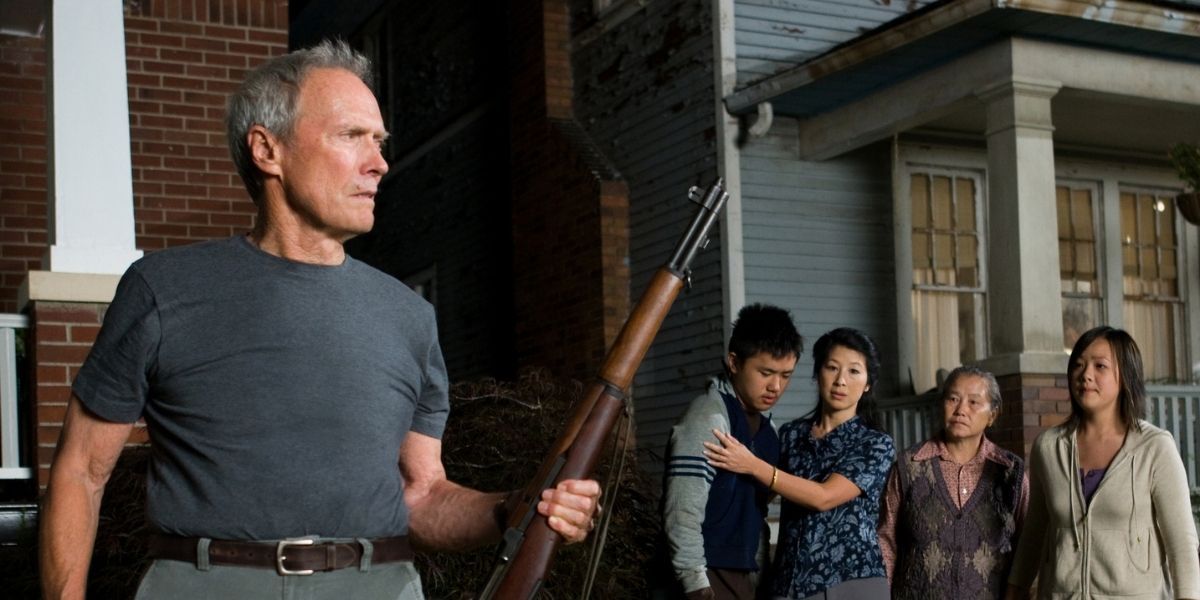
The current stage of Eastwood’s career is the Curmudgeon Era, where the bulk of his roles have found the renowned actor in varying degrees of feeble, grouchy, hardened, and elderly. 2000’s Space Cowboys kicks off this era, featuring Eastwood as former Air Force pilot Frank Corvin, whose opportunity to go into space with his team was scuttled by N.A.S.A.’s Bob Gerson (James Cromwell) forty years ago. A Russian satellite has veered off course, and Corvin, who designed its guidance system, is pressed back into service with his former team (consisting of fellow elders Tommy Lee Jones, Donald Sutherland and James Garner) to fix it before it enters the atmosphere.
In Blood Work, Eastwood is retired F.B.I. profiler Terry McCaleb, the successful recipient of a heart transplant, who is hired to find the killer of his heart donor. In his pursuit, he comes to realize the killer to be the serial killer he had fruitlessly chased for years, but the limitations of his age and health hinder his abilities. In 2004, multiple Oscar winner Million Dollar Baby starred Hilary Swank as aspiring female boxer Maggie Fitzgerald, who eventually talks gruff, elderly boxing trainer Frankie Dunn (Clint Eastwood) into training her. As her career takes off, the two grow a deep friendship until an unfortunate accident leads to a soul-crushing end. Gran Torino in 2008 cast Eastwood as malcontent Korean War veteran Walt Kowalski, a deeply unhappy man who doesn’t get along with anyone. When teenage neighbor Thao Lor (Bee Vang) tries to steal Kowalski’s prized 1972 Gran Torino, he takes it upon himself to reform the young man, eventually stepping up to protect Lor and his family from gangs.
Another variant of the aged, stubborn crank is Eastwood’s role as baseball scout Gus Lobel in 2012’s Trouble with the Curve. With one last opportunity to scout for his team, Lobel heads to North Carolina. His estranged daughter Mickey (Amy Adams) follows along to make sure he’s alright, and in doing so pushes him to explain why he pushed her away so many years ago. Eastwood’s most recent addition to the Curmudgeon Era is in 2021’s Cry Macho. He plays Mike Milo, a one-time rodeo star and former horse breeder, entrusted to bring the son of an ex-boss home, away from his alcoholic mother. Set in 1978, the weary horseman and the boy take a challenging journey back to Texas through rural Mexico, where Milo starts finding purpose again as he teaches Rafael (Eduardo Minett) what it means to be a good man.
Clint Eastwood – cowboy, rebel, haunted, curmudgeon, and more – has a legacy that cements his place as a Hollywood icon. Even at 92, he continues to excel in the cinematic world he has thrived in, and if he remains in this current stage of his career, or boldly goes headfirst into a whole new era, we can rest assured that Eastwood will deliver as he always has – among the best.
You may like
Clint Eastwood
Mystic River: Why Clint Eastwood’s Best Movie Still Holds Up Today

A filmmaker of Clint Eastwood‘s caliber is going to have a filmography full of gems. Primarily known for his work in Westerns, biopics, and military dramas, every so often, Eastwood steps outside his comfort zone and delivers in a genre that would seem completely unexpected on paper. That happened in 2003 with Mystic River, a neo-noir murder mystery drama that seems a bit forgotten or overlooked, even though it was a financial success and earned six Academy Award nominations. It represents Eastwood at his very best, breathing vivid life into complex characters as he examines a plethora of themes that range from loyalty, friendship, revenge, and, ultimately, forgiveness.

Mystic River is based on the 2001 novel of the same name by Dennis Lehane, and it follows the lives of three childhood friends, Jimmy Markum (Sean Penn), Sean Devine (Kevin Bacon), and Dave Boyle (Tim Robbins), living in Charlestown, Boston in 1975. Dave is kidnapped by two men claiming to be police officers, and he’s sexually abused by them over a four-day period until he escapes. The traumatic event shapes the three friends, and they ultimately lead very different lives twenty-five years later.
Jimmy is an ex-con that now owns a convenience store in the neighborhood, Sean works for the Massachusetts State Police as a detective, and Dave is your everyday blue-collar worker that still lives with the trauma of being abducted and raped. Their lives are forced together once again through tragedy when Jimmy’s daughter Katie (Emmy Rossum) is found murdered, and friendship is tested when all signs point to Dave being the murderer.
Mystic River Is a Departure From Clint Eastwood’s Other Work
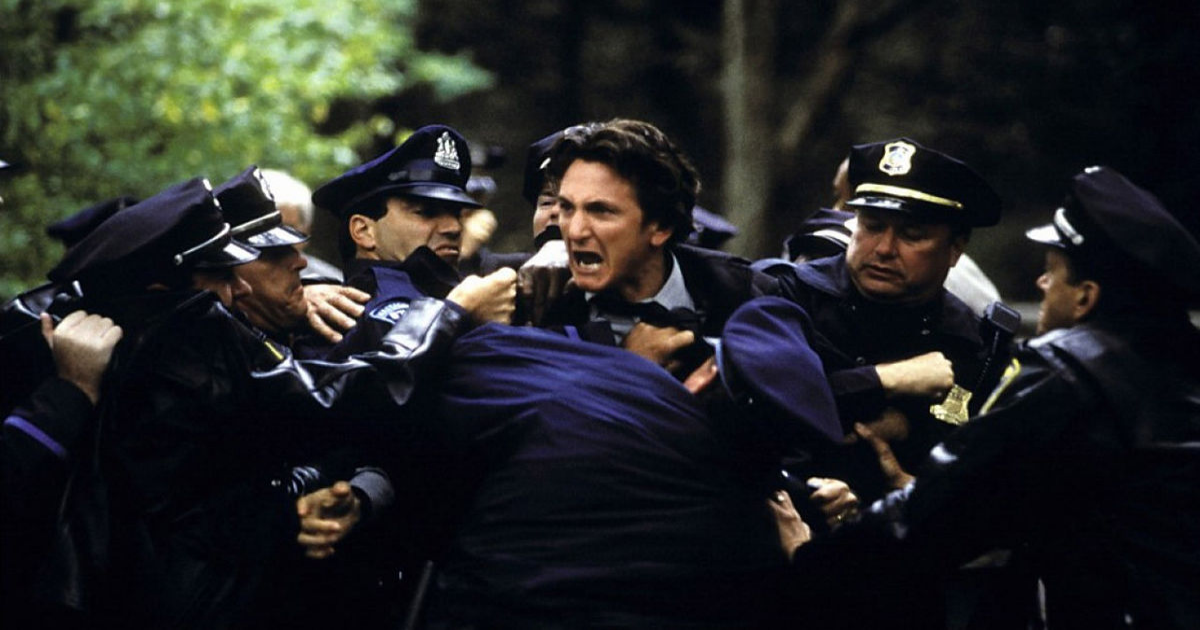
Eastwood tackles the material in Mystic River with a sure and confident hand. It also represents a unique departure from some of his other films. Much of the action takes place under the cover of darkness, and Eastwood is able to find beauty in that darkness. The filmmaker focuses on a character’s eyes or the gleam of a weapon, for instance, as darkness permeates most of the scene.
For the scenes that take place during the day, the filmmaker opts for tight close-ups that linger over the emotions of his impressive cast. There is something uncomfortably intimate about Mystic River, and that has much to do with the subject matter. None of this story is particularly easy to digest, and Eastwood adds to that discomfort with his choices to frame scenes in such a way that’s almost intrusive. The audience feels a growing sense of dread and tension as more of the story unfolds.
Using Lehane’s novel and Brian Helgeland’s screenplay as a blueprint, Eastwood profoundly explores generational trauma and how the sins of the past can leave a permanent mark on our present. Even though the abuse only happened to Dave, the effects of the event leave a mark on all three friends, with Dave being the primary victim and the others feeling a sense of survivor’s guilt for not being subjected to it themselves.
The ordeal forever changes their union because they’re never quite able to look at each other the same way again, as each friend deals with the trauma differently. Jimmy is stunned by the act of abuse but can’t give Dave the support he needs, which then bleeds into their present when Jimmy begins to suspect that Dave had something to do with his daughter’s murder. He doesn’t want to consider that his friend would do something like this because of the trauma he endured as a child, but as evidence mounts against him, Jimmy has to decide if friendship and loyalty overshadow his need for vigilante justice. The story is rich with so many complexities that make it some of Eastwood’s most compelling work as a filmmaker.
Eastwood also takes his time with the story and lets it unfold as it should. Mystic River is very nuanced, and he knows he’s dealing with heartbreaking subject matter that requires patience and respect. The story is grounded in so much reality that Eastwood seems keenly aware that a viewer might be an actual victim of this kind of abuse themselves, so he delicately approaches the topic and gives it the emotional weight it deserves.
He also shows the uncomfortable side of abuse where the victim, unfortunately, can be shamed because of the event. Dave becomes an outsider later in his life, even with his close friends, something that sadly comes along with this kind of trauma. Eastwood approaches all of this responsibly and provides a very balanced outlook to all the events transpiring on screen.
Mystic River has become known for its powerhouse performances, and Eastwood pulls the very best from his ensemble cast. While the scenes with the young actors are brief in the beginning, they set the tone of who these people will be twenty-five years later. Dave becomes the outcast because of the event; Jimmy lacks empathy and doesn’t trust authority, while Sean becomes the grounded one of the bunch and a police officer in an attempt to prevent a tragedy like this from ever happening again.
Clint Eastwood Pulls Powerhouse Performances From His Cast
Tim Robbins, Sean Penn, and Kevin Bacon do a great job conveying the unspoken tension between all three of these characters. There is a sense of loyalty, but so much has taken place over the years that it has forced them all to lead very different lives. As a group, they are uniformly excellent. You feel the history between the characters and the bonds that were broken, only to be reopened by a new traumatic event.
On their own, Penn gives the performance of a lifetime as Jimmy, and it’s not a shock that this turn finally earned him his first Academy Award for Best Actor. Penn is a dominant presence in all of his scenes, and there is a sense of uncertainty whenever he’s around because you don’t know exactly what move he will make.
That’s not to say he doesn’t display layers. All of that bravado is broken once he finds out his daughter is murdered. It’s hard to pinpoint a director’s best scene on film, but what Eastwood pulls out of Penn during the “Is that my daughter?” sequence represents some of his very best work as a filmmaker.
Robbins also received an Academy Award for Best Supporting Actor for his work here, representing a much-deserved win. As Dave, Robbins is the tragic and emotional heart of the story. The viewer feels instant empathy for Dave due to what he went through as a child, but you’re also left questioning everything when it seems like Dave could be the one who murdered Katie.
Robbins keeps you on your toes throughout, making you question his innocence while also seeing the tenderness in him as he interacts with his own child, who is just about the age he was when he was abused. As for Bacon, of the three male leads, he gives the most subdued performance, but it suits the character. He’s trying to make everything right and keep it all together. It’s a subtle performance that carries its own emotional weight.
Eastwood also makes the supporting roles worthy of attention. Marcia Gay Harding, as Dave’s wife Celeste, puts in powerful work here that earned her a Best Supporting Actress Oscar nomination, while Laura Linney more than holds her own with Penn as his second wife, Annabeth. In addition, Laurence Fishburne also fills in as Sgt. Whitey Powers in another excellent part.
Mystic River is a haunting and poetic motion picture that showcases a director laying it all out on the table. Eastwood gives the audience everything he has as a director and pours it out across the screen in a film that is just as powerful twenty years after its initial release.
Clint Eastwood
Clint Eastwood’s Most Iconic Non-Western Role Was Only Possible Because Of This Actor

SUMMARY
Clint Eastwood’s role in Dirty Harry is considered one of his most iconic, and the film is a classic in the crime genre.
Paul Newman initially turned down the role of Harry Callahan in Dirty Harry but recommended Clint Eastwood for the part.
Newman declined the role due to his liberal beliefs, and Eastwood’s portrayal of Callahan differed from Newman’s perspective, but both respected each other.
SCREENRANT VIDEO OF THE DAY

Although Clint Eastwood first built his impressive career on Western movies like The Man with No Name franchise and The Outlaw Josey Wales, the actor’s biggest non-Western role in Dirty Harry is one of his most iconic, and it might have never happened without this one actor. Clint Eastwood began acting in the 1950s, and over several decades, became a staple in the Western genre. What makes Eastwood stand out is the fact that he has not only appeared in countless films, but has also directed them himself. Films like Unforgiven and Gran Torino have defined his career. However, Dirty Harry is by far one of Clint Eastwood’s best films.
In 1971, Clint Eastwood starred in the neo-noir action film Dirty Harry. The film, and its adjoining sequels, follow Inspector “Dirty” Harry Callahan, a rugged detective that is on a hunt for a psychopathic serial killer named Scorpio. The Dirty Harry franchise lasted from 1971 to 1988, and has since been considered a classic. In fact, Dirty Harry was selected for preservation in the United States National Film Registry by the Library of Congress because of its cultural significance. However, this film might have been vastly different if Clint Eastwood had never been in it, and scarily enough, this definitely could have happened back in 1971.
Paul Newman Rejected Dirty Harry Before Suggesting Clint Eastwood For The Role
Dirty Harry went through many production challenges before it was actually made, and one of those included casting the iconic detective. In the film’s early stages, the role was offered to actors such as John Wayne, Robert Mitchum, Steve McQueen, and Burt Lancaster. However, for various reasons, including the violence that permeates the film, these actors all declined. For a time, Frank Sinatra was attached to the project, but he also eventually left the production. In reality, Clint Eastwood wasn’t even in the cards for portraying Dirty Harry, but his big break came when Paul Newman was offered and declined the role.
Paul Newman, like many amazing actors before him, was offered the role of Harry Callahan, but ultimately said no. However, what makes his refusal stand out among the rest is that he recommended another actor that could be perfect for the role: Clint Eastwood. At this time, Eastwood was in post-production for his first film Play Misty for Me, meaning his career was taking something of a turn. Also, unlike his predecessors, Eastwood joined up with Dirty Harry, just as Newman thought he would. Because of his Western roots, the violence and aggression that made up Dirty Harry didn’t bother Eastwood at all.
Why Paul Newman Turned Down Dirty Harry
Paul Newman turning down the leading role in Dirty Harry may not seem too surprising considering the host of other actors that also declined the movie, but Newman definitely had his reasons. While previous actors had condemned the movie for its incredible violence and themes of “the ends justify the means,” Newman refused to take the role because of his political beliefs. Since Harry Callahan was a renegade cop, intent on catching a serial killer no matter the cost or the rules that would be broken, Newman saw this character as too right-wing for his own liberal beliefs.
Paul Newman was an outspoken liberal during his life. He was open about his beliefs, so much so that he even made it onto Richard Nixon’s enemies list due to his opposition of the Vietnam War. Other issues that Newman spoke out for included gay rights and same-sex marriage, the decrease in production and use of nuclear weapons, and global warming. As a result of his politics, Newman quickly denied the role of Harry Callahan. In an interview with Entertainment Weekly as reported by Far Out Magazine, Clint Eastwood commented that he didn’t view Callahan in the way Newman did, but still respected him as an actor and a man.
Would Dirty Harry Have Been So Successful Without Clint Eastwood?
Ultimately, it’s hard to say whether Dirty Harry would have been successful without Clint Eastwood. Arguably, any big-time actor could have made the film succeed solely based on their fame. However, one aspect of Dirty Harry and its carousel of actors is that the movie had various scripts, all with different plots. So, if Dirty Harry had been in a different location with a different serial killer and a different lead actor, there’s a chance it wouldn’t have been nearly as successful. In the end, Dirty Harry is a signature for Clint Eastwood, and most likely, audiences are lucky that it was made the way it was.
Clint Eastwood
The story of how Clint Eastwood prevented Ron Howard from embarrassment

A star of American cinema both in front of and behind the camera, Ron Howard is often forgotten when recalling the greatest directors of modern cinema, yet his contributions to the art form remain unmatched. Working with the likes of Tom Hanks, Chris Hemsworth, Russell Crowe and John Wayne, Howard has brought such classics as Apollo 13, A Beautiful Mind and Rush to the big screen.
Entering the industry in the late 1950s and 1960s, Howard started his career as an actor, making a name for himself in shows like Just Dennis and The Andy Griffith Show before his role in 1970s Happy Days would catapult him to national acclaim. His directorial debut would come at a similar time, helming 1977’s Grand Theft Auto, the ropey first movie in a filmography that would later become known for its abundance of quality.
Known for his acting talents, Howard wouldn’t become a fully-fledged director in the eyes of the general public until the 1980s, when he worked with Tom Hanks on 1984’s Splash and George Lucas for the 1988 cult favourite Willow.
With hopes of becoming the new Star Wars, Willow was instead a peculiar fantasy tale that told the story of a young farmer who is chosen to undertake the challenge to protect a magical baby from an evil queen. Starring the likes of Warwick Davis, Val Kilmer and Joanne Whalley, the film failed to make a considerable dent in pop culture at the time, largely being ridiculed by critics and audiences alike.
Screened at the Cannes Film Festival, the movie was spared humiliation by none other than Clint Eastwood, who saw the craftsmanship behind the picture, as described by Ron’s daughter, Bryce Dallas Howard.
Speaking to Daily Mail, the actor recalled: “My dad made a film called Willow when he was a young filmmaker, which screened at the Cannes Film Festival and people were booing afterwards. It was obviously so painful for him, and Clint, who he didn’t know at that time, stood up and gave him a standing ovation and then everyone else stood up because Clint did”.
Dallas Howard, who worked with Eastwood on the 2010 movie Hereafter, became very fond of Eastwood as a result, looking up to him as an exemplary Hollywood talent. “Clint puts himself out there for people,” she added, “As a director he is very cool, very relaxed, there’s no yelling ‘action’ or ‘cut’. He just says: ‘You know when you’re ready.’ I told my dad he should do that!”.
Take a look at the trailer for Howard’s 1988 fantasy flick below.
Trending
-

 Entertainment1 year ago
Entertainment1 year agoJohn Wayne’s son speaks on military service, Hollywood life and his dad, ‘The Duke’ – My Blog
-

 Entertainment1 year ago
Entertainment1 year ago40 Legendary John Wayne Quotes – My Blog
-

 Entertainment1 year ago
Entertainment1 year agoNew biography reveals the real John Wayne – My Blog
-

 Entertainment2 years ago
Entertainment2 years agoWhy one POPULAR ACTOR was FIRED from THE SONS OF KATIE ELDER and lost his career as a result! – Old western – My Blog
-

 Entertainment1 year ago
Entertainment1 year agoRio Lobo (1970) marked the last collaboration between John Wayne and Howard Hawks. – My Blog
-

 Entertainment1 year ago
Entertainment1 year agoJohn Wayne and the ‘Bonanza’ Cast Appeared in This Epic Coors Light Commercial – My Blog
-

 Entertainment1 year ago
Entertainment1 year agoHow Maureen O’Hara Broke Her Hand During Iconic Scene With John Wayne – My Blog
-

 Entertainment1 year ago
Entertainment1 year agoDid John Wayne really have a good time filming 1972’s The Cowboys? – My Blog

